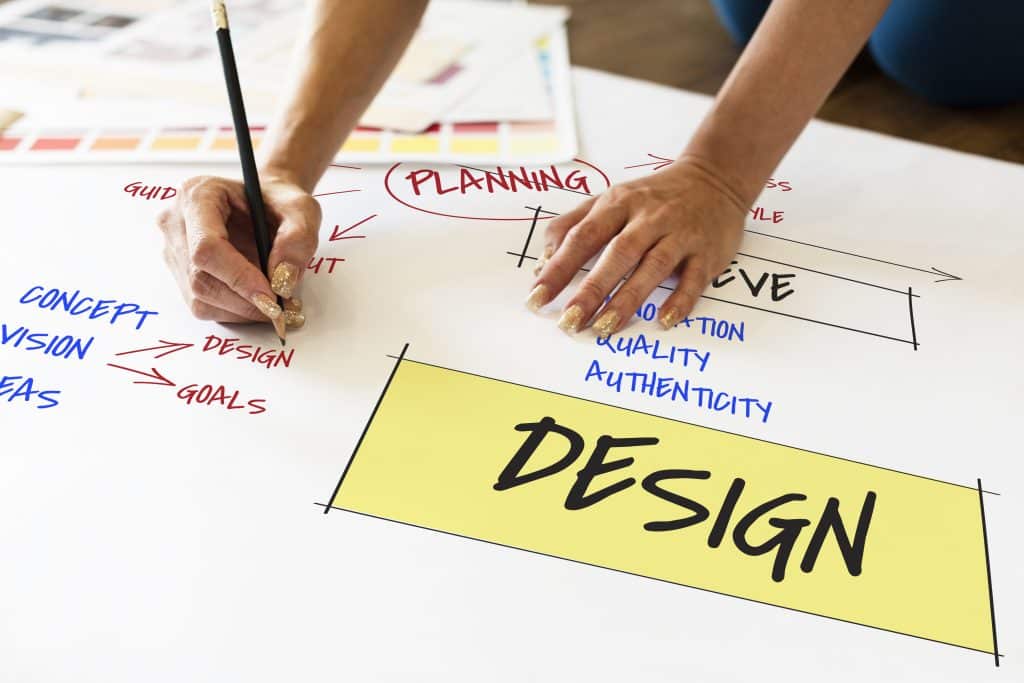Simplicity in Design Enhances Focus and Productivity
Aiden Foster July 31, 2025
In the fast-paced, technology-driven world we live in today, productivity is a core focus for individuals and organizations alike. Whether you’re working from an office, your home, or a remote location, creating an environment that promotes efficiency and mental clarity is crucial. One key element that has been gaining attention in recent years is simplicity in design. Simplified designs, whether in physical spaces, digital interfaces, or even daily routines, are proven to foster a more focused and productive environment.
But why does simplicity matter so much, and how can design contribute to productivity in tangible ways? In this article, we’ll dive deep into the emerging trend of minimalist design, why it boosts focus, and how it enhances overall productivity. We’ll also explore some current best practices for integrating simplicity into both the workplace and personal spaces.

The Power of Simplicity in Design
Minimalism isn’t just a trend—it’s a way of living that has expanded from interior design to product development, and even to digital interfaces. Simplicity in design aims to strip away unnecessary elements that could potentially overwhelm or distract individuals, instead focusing on essentials that foster clarity and efficiency.
1. Minimizing Cognitive Load
Cognitive load refers to the mental effort required to process information. Studies have shown that cluttered environments—whether digital or physical—can significantly increase cognitive load, making it harder for individuals to focus and complete tasks effectively. In contrast, a simple, organized space reduces cognitive load by eliminating distractions, allowing people to direct their mental resources toward the task at hand.
The principle of “less is more” is at the heart of many design philosophies today, whether it’s in the workplace or in product interfaces. Take, for example, the rise of minimalist websites and apps. Companies are increasingly adopting simple, clean user interfaces (UIs) to keep their users focused on their goals, with intuitive navigation and fewer visual distractions.
Key Takeaways:
- Minimalist designs reduce cognitive load.
- Reducing clutter enhances focus and mental clarity.
2. Simplified Workspace for Enhanced Focus
The workspace plays a critical role in productivity, and many professionals are increasingly recognizing the importance of a simplified, organized environment. A cluttered desk or office space can lead to unnecessary stress and distractions. According to a study by the Princeton University Neuroscience Institute, the brain struggles to focus when surrounded by visual clutter. The study highlights that a cluttered environment can cause a feeling of overload, making it harder to filter out irrelevant information.
Designers and business owners have taken this finding to heart, optimizing workspaces for simplicity to promote a sense of calm. Companies like Google and Apple have embraced open office spaces, flexible seating arrangements, and neutral colors to enhance mental clarity. These minimalist approaches help employees stay engaged and focused throughout the day.
Practical Tips for a Simplified Workspace:
- Keep only essential items on your desk.
- Use neutral colors for walls and furniture to create a calm, soothing atmosphere.
- Implement storage solutions that keep clutter hidden but easily accessible.
3. Digital Minimalism: Reducing Screen Clutter
As technology becomes increasingly integrated into our work and personal lives, digital interfaces have become a central area where simplicity plays a pivotal role. Digital clutter—too many notifications, overwhelming interfaces, and an overabundance of apps—can make it harder for individuals to focus and accomplish tasks. In fact, research from Microsoft suggests that the average human attention span has dropped significantly in the digital age, with many people switching between tasks every 10 to 15 minutes.
Enter digital minimalism. A growing trend, digital minimalism advocates for a streamlined, distraction-free digital environment. This involves reducing the number of apps, notifications, and digital platforms that consumers interact with. The goal is to create more focused, intentional digital experiences. Apps like “Focus Mode” on smartphones, which limit notifications during specific times, and productivity tools like “Forest,” which help users stay focused by discouraging phone usage, are examples of how people are actively minimizing digital distractions.
Strategies for Digital Minimalism:
- Unsubscribe from unnecessary email lists.
- Use focus apps that block distracting websites during work hours.
- Organize your phone or computer files and apps to reduce digital clutter.
4. How Simplicity in Design Promotes Innovation
While simplicity in design helps reduce distractions and foster focus, it also encourages innovation. The minimalist approach eliminates unnecessary details and encourages creative thinking. By cutting through the noise, individuals are free to focus on the essence of a problem or idea. The result? More original, impactful solutions.
Steve Jobs, co-founder of Apple, was a pioneer of minimalist design principles. His belief in simplicity extended not just to Apple products but also to the company’s entire approach to work and innovation. Jobs often emphasized that simplifying design led to more elegant, efficient, and innovative products.
Innovation Through Simplicity:
- Simplified designs help remove cognitive barriers to creative thinking.
- Minimalist approaches to product development encourage clarity of purpose.
5. The Role of Routine in Supporting Minimalist Design
Beyond the physical and digital spaces we interact with, routines also play a significant role in creating a minimalist, focused environment. Many successful individuals credit their success to having structured routines that streamline their daily tasks, thus minimizing decision fatigue and increasing productivity.
The concept of “routine minimalism” involves simplifying your daily habits and processes to remove unnecessary complexities. It can range from setting aside specific times for focused work, eliminating non-essential meetings, or sticking to a consistent morning routine. In doing so, individuals reduce the mental energy spent on decision-making and make room for more creative and strategic thinking.
Building a Routine for Simplicity:
- Designate specific times for checking emails and social media.
- Create a morning routine that sets the tone for a productive day.
- Automate repetitive tasks where possible (e.g., meal planning, bill payments).
Conclusion
Simplicity in design is not just a trend—it’s a powerful strategy that enhances focus, reduces stress, and increases productivity. Whether in the workplace, your digital environment, or in your daily routines, embracing simplicity creates the mental clarity necessary for creative thinking and innovation. By reducing distractions and focusing on the essentials, you unlock a deeper level of focus and performance, allowing you to achieve your personal and professional goals more effectively.
To embrace simplicity, start by decluttering your physical and digital spaces. Create environments that support focus and minimize distractions, and build routines that allow you to conserve your mental energy for high-priority tasks. In doing so, you can foster a more productive, creative, and efficient life, both at work and beyond.
Reference
- Minimal Design Philosophy Powers Innovation, https://www.smithsonianmag.com
- Minimizing Cognitive Load & Environmental Clutter, https://pubmed.ncbi.nlm.nih.gov
- Visual Clutter Overloads Attention & Impairs Focus, https://www.microsoft.com







